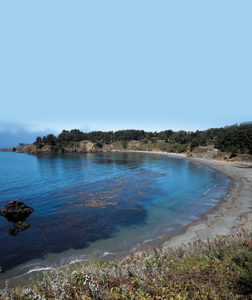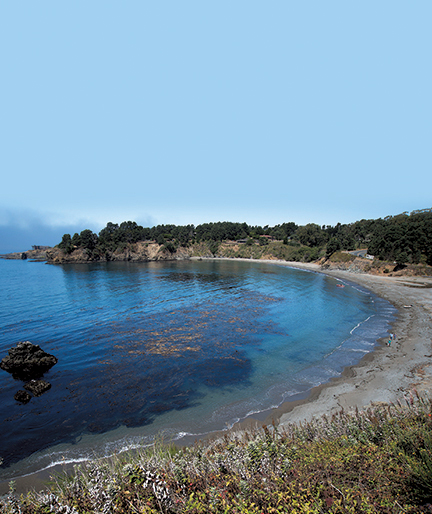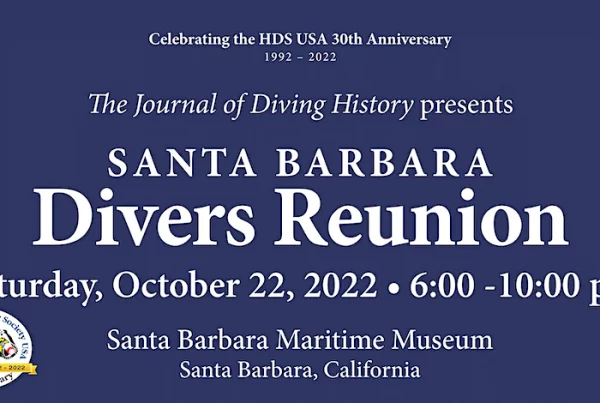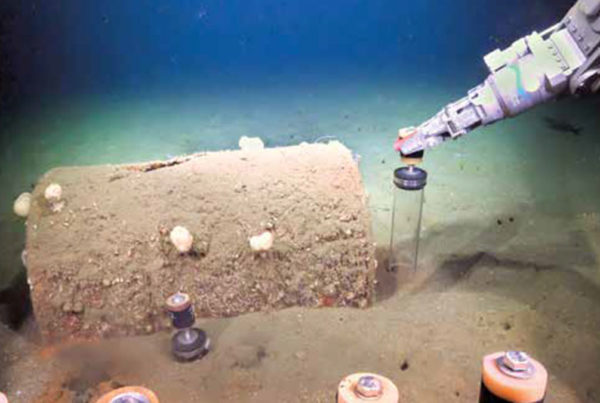 Californians can easily appreciate the pristine beauty of our beaches and coastal parks as they gear up for a dive. However, it may be difficult to believe that in the past our dive sites were once centers of intense commercial activity. Nearly all of the dive sites in Mendocino County were once lumber ports that provided the timber to build the growing City of San Francisco. Van Damme State Park is an example of a great dive site with a lot of history.
Californians can easily appreciate the pristine beauty of our beaches and coastal parks as they gear up for a dive. However, it may be difficult to believe that in the past our dive sites were once centers of intense commercial activity. Nearly all of the dive sites in Mendocino County were once lumber ports that provided the timber to build the growing City of San Francisco. Van Damme State Park is an example of a great dive site with a lot of history.
The landing at Van Damme State Park has always been called Little River. This cove was first developed as a port to ship fresh elk meat to San Francisco, and later as a cattle ranch and potato farm. By 1864 the timber around better sites was logged out and a lumber mill was established. The mill remained in business for over 20 years, right alongside a shipyard that built 19 schooners. This was one of the few sites on the North Coast where it was practical to build a wharf, and the wharf at Little River lasted over 20 years — a testament to the degree of protection that the cove offers.
During the 1850s a mill worker’s son named Charles Van Damme went off looking for fame and fortune, and found it as the owner of the Richmond-San Rafael ferry line. Charles loved the area where he grew up and later in life bought up all of the land surrounding the cove. He willed the land to the state upon his death, with the requirement that the beach remain free for all to enjoy.
The Little River Beach is among the calmest and most comfortable dive sites on the North Coast. A pair of large wash rocks named Keyhole and Top Hat and the surrounding smaller rocks create an extensive reef system that effectively protect the cove from all but the worst of the winter storms. Yet, divers will find a wealth of colorful invertebrates, large and small fish just offshore.
There is a shallow reef not far from shore. Here divers will find colorful anemones, nudibranchs, and a number of small fishes. This seems to be a good place for juvenile lingcod to fatten up on smaller rockfish. There were a large number of abalones here on a recent dive, including some very large ones. Look, but don’t touch these tasty invertebrates since they may not be taken in California’s waters.
The southern part of the cove has a mostly rocky bottom separated by patches of sand. On a recent dive there were a huge number of purple sea urchins as we began the day. Later in the day there were substantially fewer, since we were diving for a Watermen’s Association event to clear the cove of purple urchins.
The northern part of the cove is mostly gravel, except there are piles of discarded ballast rocks inshore and north of Key Hole rock. These were used to weigh down schooners that left empty from San Francisco and were dropped in the cove as the ships filled up with lumber during the 1800s. Should you swim along the north face you will find the entrance to a large tunnel — The Cave of the Trolls. It is about 20 feet tall, 10 feet wide, 100 feet long, and is half filled with water. The tunnel is great fun to swim through on calm days. This is an eerie experience with the constant, but mild, surge picking you up and down, along with the sound of the surf echoing back and forth.
On calm days the best diving is near Key Hole and Top Hat Rocks. Right outside the rocks are a series of depressions that are filled with giant green anemones. The bottom drops off rapidly to 60 feet and the rock walls are covered with fluffy white metridium anemones and red fish-eating anemones. Divers will find a number of large lingcod, as well as several species of rockfish.
Divers with boats or kayaks should take the time to explore the small coves to the south of the main cove. Here one finds some beautiful topside scenery with several large inlets, with large caves and arches. This is one of the best areas in California to explore by kayak.
Don’t forget to take a little time to explore the topside part of the park as well. There is a trail leading a pygmy forest, where the poor soil conditions only permit the growth of severely stunted trees. There is also a peat bog with an assortment of carnivorous plants including the rare sundew.
At-A-Glance
Skill level: Beginner or better
Location: 2 miles south of the town of Mendocino at mile marker MEN 48.03
Access: There is free parking in the lot next to the beach. Hand-carry boats or kayaks may be launched here.
Facilities: Cold showers and pit toilets on the beach, campground with hot showers and flush toilets on the east side of Hwy. 1.
Park information and access to online camping reservations may be found at parks.ca.gov.
Entry and Exit: The entry is a short walk from the parking lot.
Depth range: 15-60 feet
Conditions: Very calm within the cove, conditions are highly variable outside the cove.
Visibility: 10 to 15 feet in the cove, up to 50 feet outside the cove.
Photography: Good macro and wide-angle photography.
Hunting: The cove is within the Van Damme State Marine Conservation Area, which only limits the commercial take of kelp. There is good spearfishing for lingcod and rockfish. Currently, abalone may not be taken in California.
Cautions: The cove is protected from wind and swell, however the outer areas receive little protection and can be rough. Conditions can change rapidly.










